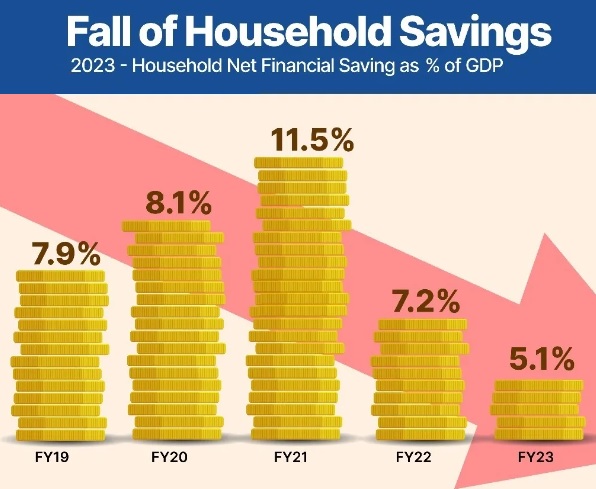7667766266
enquiry@shankarias.in
Household sector’s savings in financial assets has shown a sharp decline to 5.1% of GDP in 2022-23.
Household savings rate = (Household savings/Personal disposable income ) x 100%
|
Factors influencing Household Savings |
|
Status of Household Savings

What are the implications of fall in household savings?
References